PALM SPRINGS, Calif. – It was only a decade ago when Lincoln seemed destined to go the way of Oldsmobile and Mercury. Odd styling, cheap retro interiors and blatant parts sharing with supporting Ford vehicles had this storied American luxury brand trailing the competition by a significant margin. Then things started turning around with the reborn Continental sedan in 2017, followed by the massive and massively improved Navigator the following year. In hindsight, I equate those to the Mercury and Gemini space programs that led to Apollo and the game-changing moonshot. After driving the all-new 2024 Lincoln Nautilus throughout the Palm Springs area, it could very well deserve the accolades and ticker tape parades bestowed upon NASA in 1969.
Starting with the new styling, this second-generation Nautilus manages to stand out from the crowd without shouting. There's a quiet resolve in the rounded-over corners and subtle sculpting. The appropriately sized grille has suggestions of woven Bentley rods while a distinctive horizontal bar connects the Lincoln emblem to the narrow LED headlights. Below, two brushed metal accents anchor the fascia with a classy foundation.
Down the sides, a distinctive flourish spans almost the entire length of the front doors, and the absence of traditional door handles gives the profile an unusually clean look. Those door handles are integrated into the window frame in the same manner as the Continental, further emphasizing the way reflections and shadows dance across the gentle curves of the bodywork.
Around back, there are echoes of Audi or Porsche, but not in a derivative way since it integrates well with the rest of the Nautilus. To my hyper-critical styling eye, I can only find the slightest of nitpicks in a series of horizontal stripes present in the rearmost side window that are repeated in the edges of the headlights and taillights. My nitpicking is typically a good omen, as it means there isn't anything significant to fault it for, and that could very well be the theme of this review.
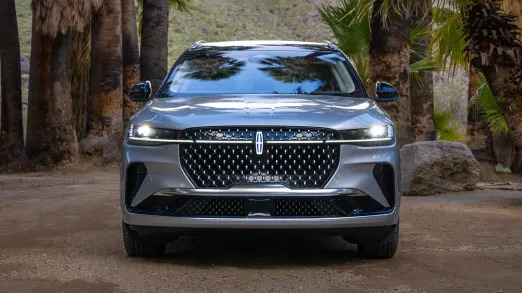

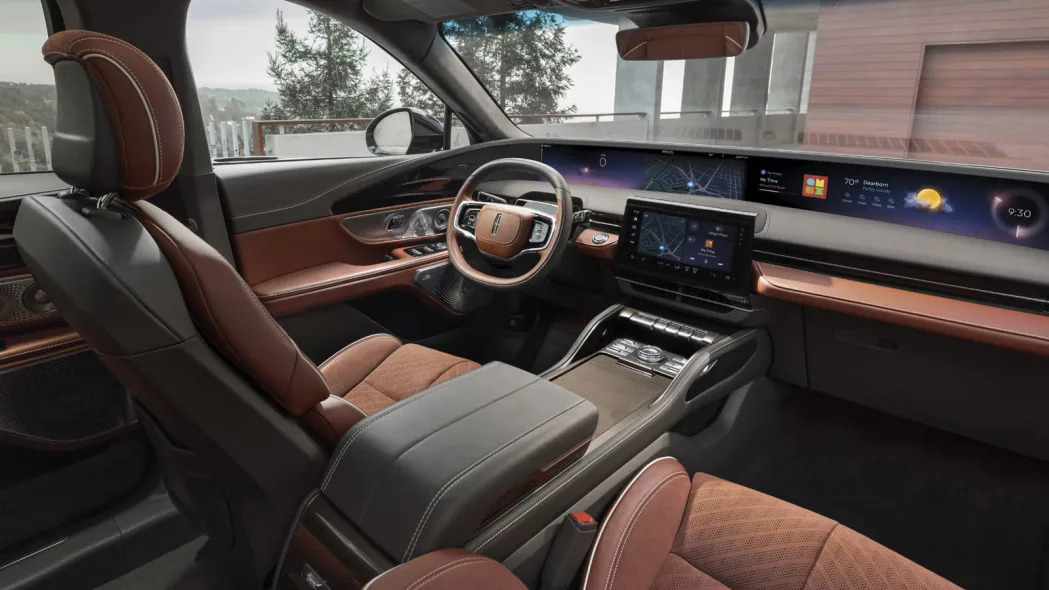
While the exterior is suitably attractive, the interior is downright stunning. The biggest attention-getter is the 48-inch curved panoramic display that spans the entire length of the dashboard. It's the type of design element expected of a concept or prohibitively expensive luxury vehicle, not a production SUV starting in the low $50,000 range. Even better, it works.
It's positioned atop the dash, just behind the hood cowl, placing the instrument panel well within the driver's sightline. In many ways, this positioning splits the difference between traditional gauges and a head-up display, though it can pack so much more information across the span than either. The other screens can easily be configured via the central touchscreen by simply moving them around as puzzle tiles. If you prefer less information, that's no problem, as you can have them blank.
The oblong steering wheel permits an almost unimpeded view of the instrument panel, and its minimal design is reminiscent of the elegant simplicity of a Volvo or Polestar. I typically loathe odd-shaped wheels, but in this case, it's rounded over enough to not register on the nitpick meter. The same holds true for the capacitive touchpads, as they don't suffer from inadvertent pushes or swipes, the way lesser controllers do.
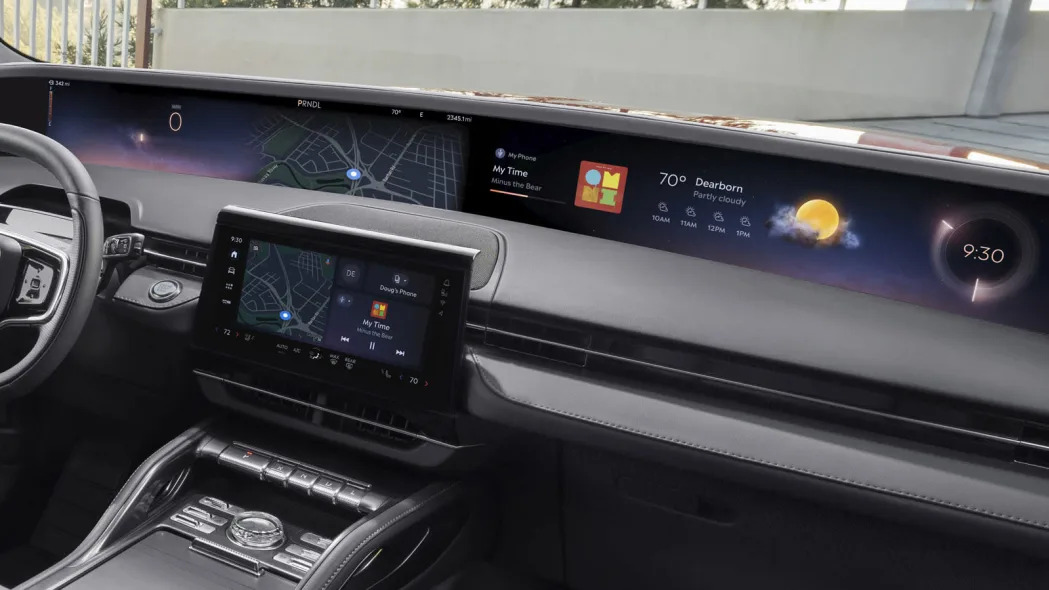 Then there are the front seats. They're similar to the split-adjustable thrones found throughout the Lincoln lineup since the Continental and are just as comfortable, with 24-way adjustments. They're heated and ventilated, but the real star is the massage function. Unlike the timid pressure exhibited by other seats, you can get a real kneading that runs down each side of your tired spine. It's somewhere between a Swedish and deep-tissue massage and is oh-so-wonderful when you're road-tripping. Add in the new Digital Scent that perfumes the air in the same way Mercedes' Air Balance system does, and it's easy to forget you're in a Lincoln.
Then there are the front seats. They're similar to the split-adjustable thrones found throughout the Lincoln lineup since the Continental and are just as comfortable, with 24-way adjustments. They're heated and ventilated, but the real star is the massage function. Unlike the timid pressure exhibited by other seats, you can get a real kneading that runs down each side of your tired spine. It's somewhere between a Swedish and deep-tissue massage and is oh-so-wonderful when you're road-tripping. Add in the new Digital Scent that perfumes the air in the same way Mercedes' Air Balance system does, and it's easy to forget you're in a Lincoln.
A rubberized phone tray with a wireless charger keeps your phone securely in place while the other bins, pockets, and cupholders provide ample storage for the rest of your personal effects. There's also a large bin under the center console that keeps items out of view of prying eyes. Overall, it's a rousing success, but of course, I can't let it go at that.
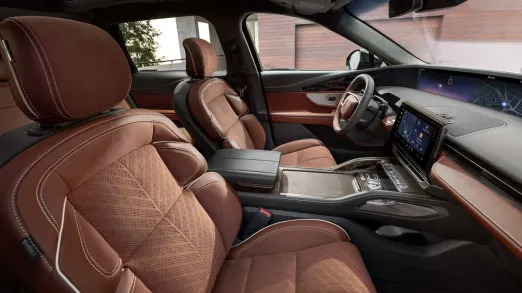
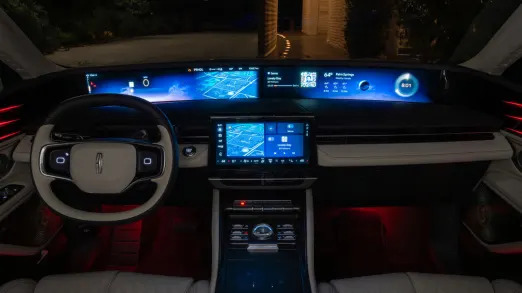
There are plenty of nitpicks, but none of them are critical on their own or collectively. That curved panoramic display can cause some reflections, but only in very specific lighting conditions and if your passenger is wearing bright clothing. The tapering trim elements that continue the display look into the doors have an odd wave pattern embossed into them as well as a cheesy backlit graphic that reminds me of those disposable paper cups from the 1990s. The touchscreen is a bit low and operating it while driving can be distracting. Some taps of the screen also went unanswered, but that could very well have come down to splitting my attention with the road ahead.
The most controversial element are the air vents that must be adjusted using the central touchscreen. It's a lot like the second-generation Porsche Panamera and just as inconvenient (Porsche has since moved away from them), but once set, you'll rarely have to deal with them again. The Google-based infotainment system accurately deciphers voice commands but doesn't quite accept natural speech as well as some rivals. I simply said, "I'm a little warm," and rather than reduce the temperature, the system responded with, "Perhaps a dip in a swimming pool would help." Gee, thanks. Saying, "Lower the driver temperature to 70 degrees," worked perfectly, though.
Materials throughout the cabin are generally praiseworthy, but some surfaces on the dash and doors are not quite as convincing as leather. I'm more surprised that the 28-speaker Revel premium audio system lacks bass. Many audio upgrades come with a preponderance of bass, but even with the slider maxed out, there's no thumping detected. In the system's defense, the source was satellite radio, but still, I expected much more.
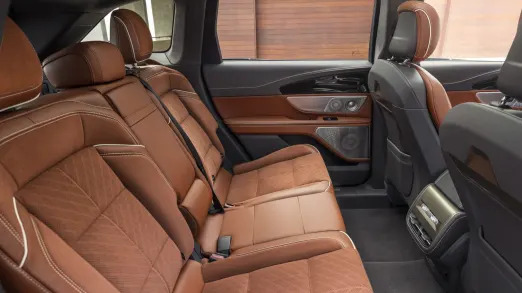

The rear seats provide a wealth of legroom and space for your feet, but headroom is kept in check by the headliner that holds the sunroof shade mechanicals. There's adequate room for the average adult, and if you recline the seatback, taller passengers should fit just fine. Behind the rear seats, the cargo space can accommodate up to 36.4 cubic-feet of luggage, which is more generous than many midsize luxury SUVs.
So how does the new Nautilus drive? Again, I only have nitpicks. Most of the miles were with the hybrid model that utilizes a 2.0-liter turbocharged four-cylinder paired with a 134-horsepower electric motor and an electronically controlled continuously variable transmission. Combined output is 310 horsepower, and all-wheel-drive is standard (the underlying platform is front-wheel-drive and shared with various global Fords and Lincolns). That power is more than adequate to get this 4,500-pound SUV up to highway speeds without pinning the pedal, but not what I'd consider impressive. When you do floor it, the engine doesn't sound half bad and certainly not like a four-cylinder the way the 250-hp non-hybrid model does.
The hybrid is definitely the preferred powertrain here as the added power and sharper response from the electric motor smooths out the power curve. Oh, and there’s also the matter of fuel economy: The hybrid returns 30 mpg combined versus the standard 2.0-liter’s 24 mpg combined. Between the drivability improvement and several hundred bucks of annual gas savings, the $1,500 premium is incredibly reasonable. Again, though, a nitpick: I would have liked some shift paddles for manual gear control on some of the sustained downhill grades rather than riding the brakes more than I preferred.
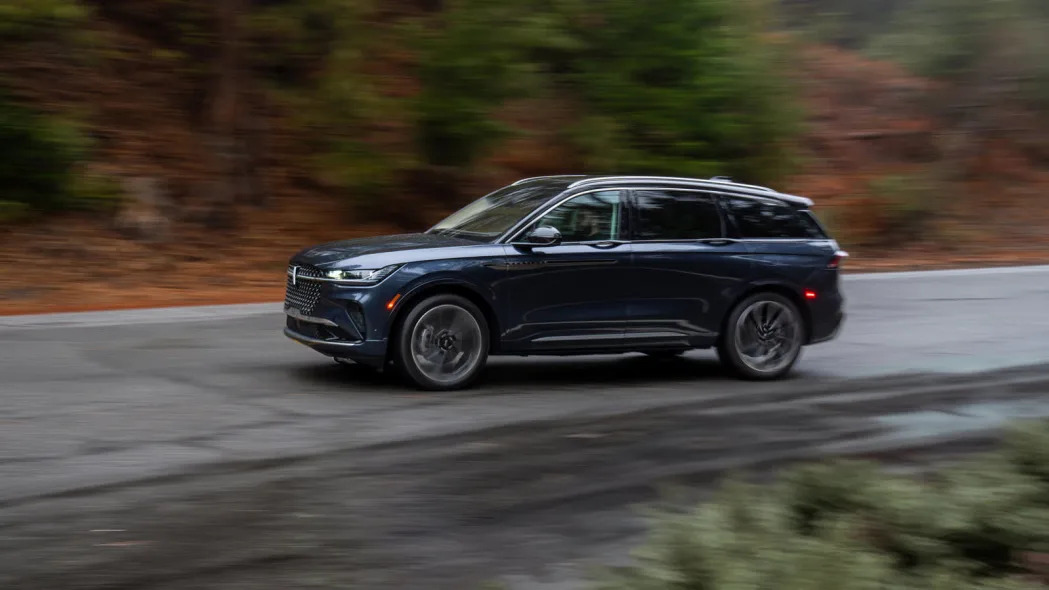
Handling is also more than adequate, but not sporty. It doesn't feel out of sorts on the squiggle of pavement from Palm Springs to Idyllwild, but you certainly won't feel the desire to charge into curves in the same way you would with a BMW X5. Then again, the Nautilus' ride quality is more compliant over bumps, and that's with the huge 22-inch wheels. The hybrid also includes Lincoln's Continuous Control Damping shocks, but I can't say I noticed much of a dynamic difference.
Braking may be my biggest nitpick of the Nautilus, as the pads seem too grabby on application and in the final few inches of stopping. I repeatedly tried to perform an imperceptible limo stop, but a poorly-timed "downshift" and the abruptness of those pads conspired against it. There was always a slightly annoying rebound with each stop. Lesser annoyances included a rather thick A pillar that obscures your view through left turns, a small surround-view camera perimeter, and a drive mode switch that doesn't toggle through modes (it brings up the modes on screen, then you have to select it from there).
Altogether, the 2024 Lincoln Nautilus exceeds expectations, and not just as a Lincoln, but against its formidable European foes. The base premiere trim has a starting price of only $52,010 (including the $1,595 destination charge), undercutting the similarly sized Mercedes GLE, Audi Q8, and BMW X5 by tens of thousands of dollars. Our Reserve III hybrid tester starts above $68,000, while the top Black Label trim pushes past $75,000. There’s undeniable value here, but this seems like a decent enough place to mention that the 2024 Nautilus is not built in Oakville, Ontario, Canada as the first-generation and its MKX predecessor were. This one’s final assembly occurs in Hangzhou, Zhejiang, China, alongside the Chinese-market Ford Edge L.
As my numerous and oversensitive nitpicks reveal, the new Nautilus isn't perfect, but as is the case with the imperfect Apollo 11 mission, it could very well be the perfect vehicle for the time. If this trajectory continues, Lincoln has a very bright future ahead.
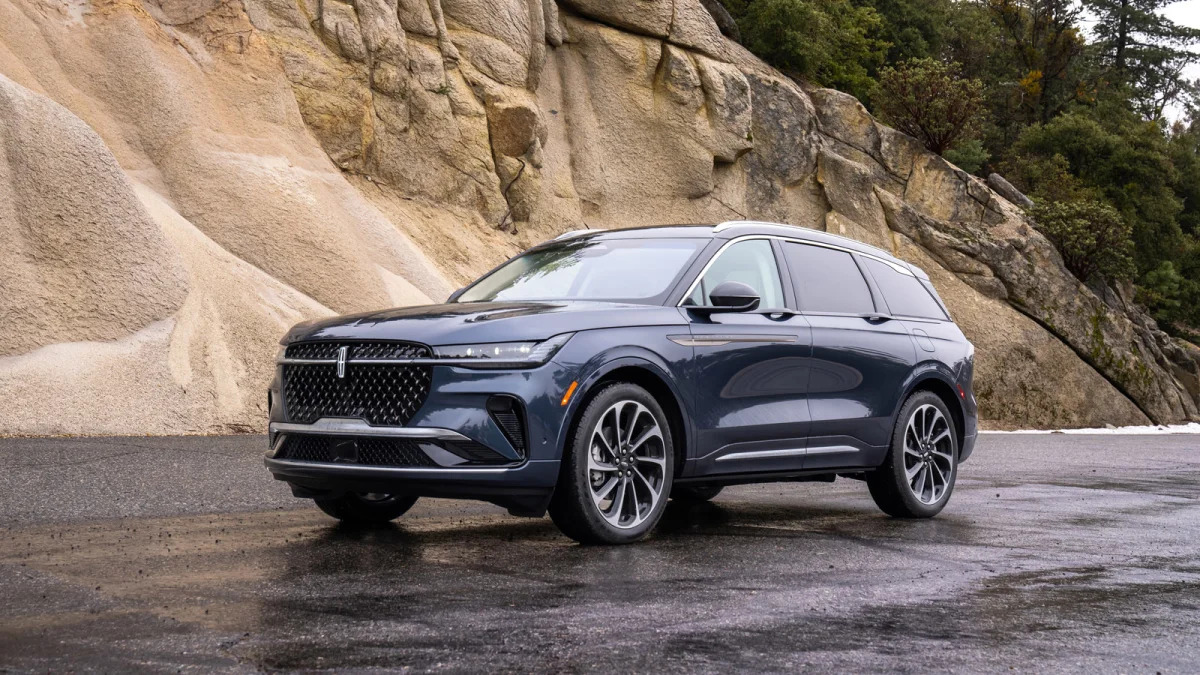








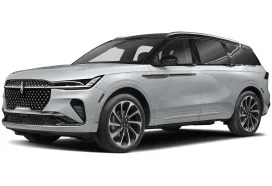

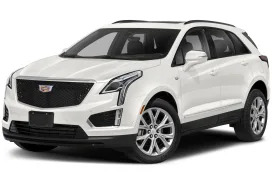

Sign in to post
Please sign in to leave a comment.
Continue